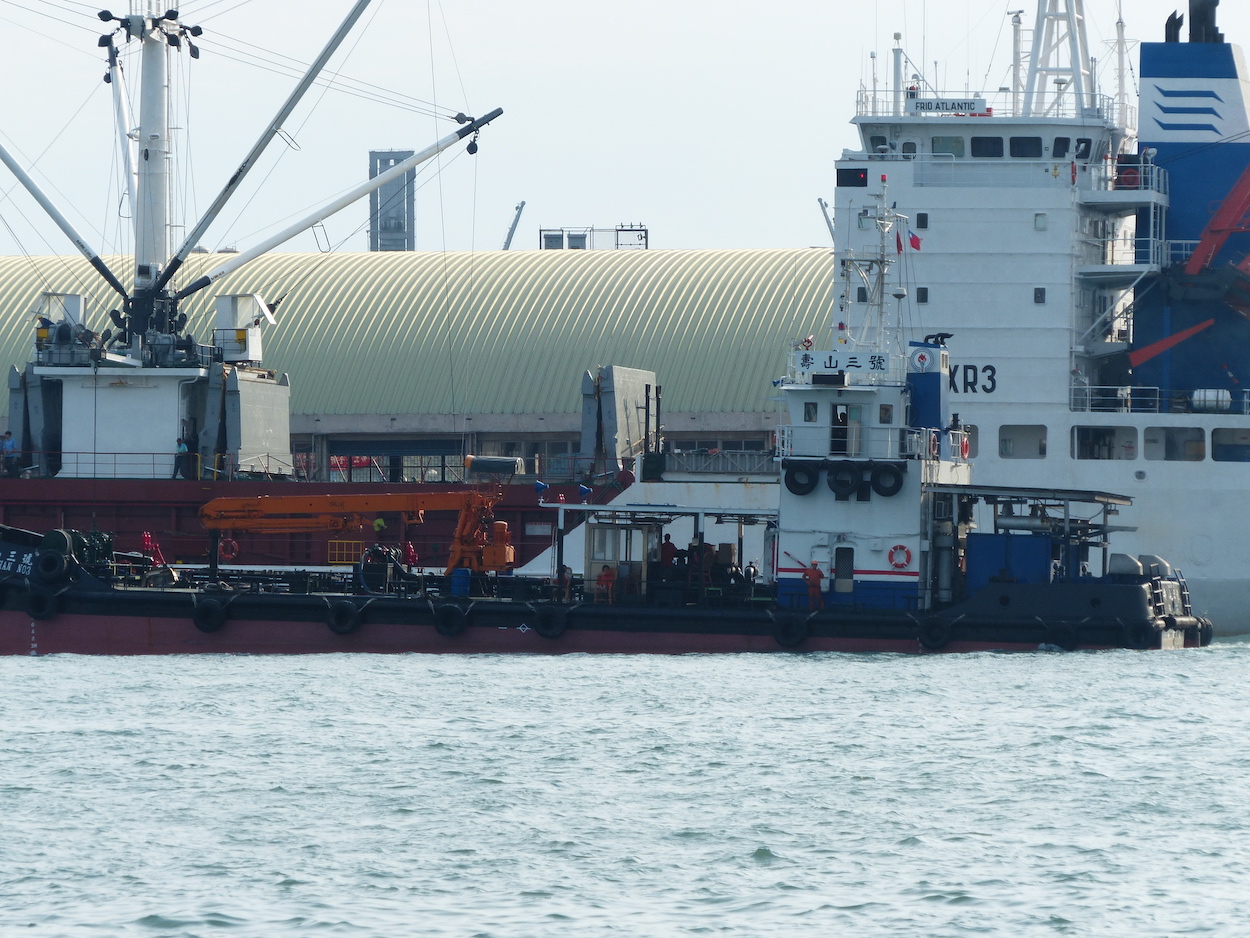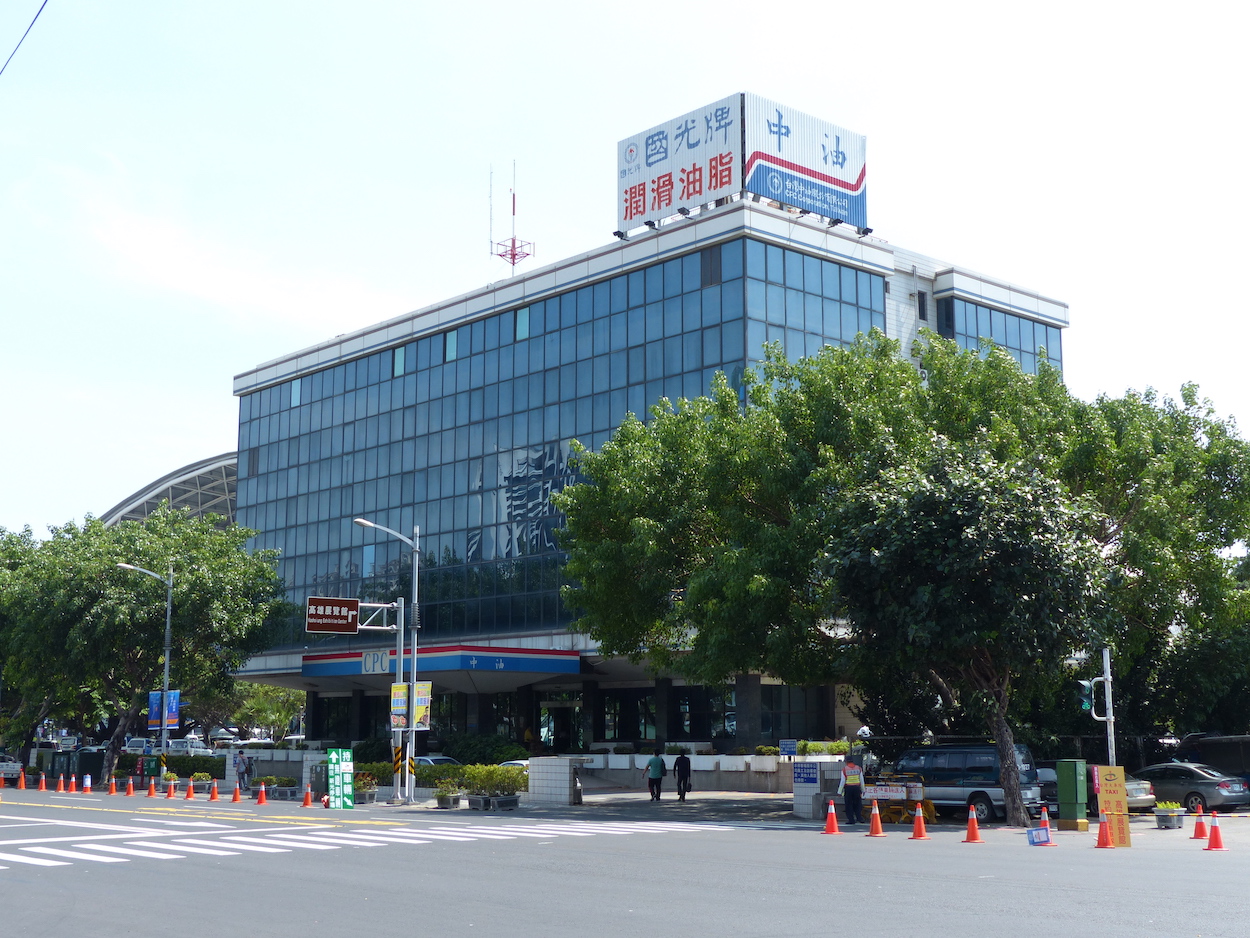by Brian Hioe
語言:
English
Photo Credit: 玄史生/WikiCommons/CC
THOUGH DROWNED out in news reporting by news focused on COVID-19, an oil spill occurred last month in Kaohsiung following an accident at the CPC’s Dalin refinery. This took place when a section of tubing broke as a tanker was transporting oil to the refinery.
The resultant oil slick affected two protected marine areas. Clearance work had to take place, with vessels deployed to clean up the slick, reducing it from over two kilometers in size to 450 meters.
While the CPC was fined 1.5 million NT, this punishment is considered a slap on the wrist by environmentalists, given that the damage to marine life and seabed could be irreversible.
 CPC ship in Kaohsiung Harbor. Photo credit: 玄史生/WikiCommons/CC
CPC ship in Kaohsiung Harbor. Photo credit: 玄史生/WikiCommons/CC
According to Greenpeace campaigner Liu Yi-chun, given the price value of seagrass and underwater mangrove forests, the area affected by the oil slick is worth close to 10 billion NT. Fishermen in the area were also affected, with the possibility that oil will affect fish stocks in the area. It is to be seen if fishermen receive any compensation, although local news outlets indicate that local fishermen have been angry about the issue.
The CPC oil spill raises a number of issues regarding the environment. Namely, large state-run companies such as CPC that have a history of causing environmental damage frequently get away with minimal punishment in cases of wrongdoing, due to close ties with the state—indeed, CPC is state-owned, something that goes back to the legacy of the KMT party-state.
Consequently, there is a disregard for marine life and ecological formations that may have taken thousands of years to develop. The most highly visible example of this in recent memory may be regarding the Datan algae reef off the coast of Taoyuan, with the Tsai administration planning on building a liquified natural gas terminal that may threaten the 7,000-year-old Datan algae reef. There are similar examples of ecological formations demolished for the sake of development from the micro-level to the macro-level all over Taiwan, ranging from national-level issues such as the Datan reef to city governments hoping to cut down historic trees for construction, refusing to shift construction.
Sometimes the human cost is utterly disregarded, One of the most infamous examples of this may be in Orchid Island, where a nuclear waste disposal facility was built in the 1970s. The majority Indigenous residents of Orchid Island were not informed that a nuclear waste disposal facility was to be built on their land and were instead told that it was a canning facility.
Indeed, oftentimes it is Taiwan’s energy needs that come into conflict with environmental concerns or the livelihood of people that live off of natural resources. This is not observed not only regarding nuclear waste disposal in Lanyu or petroleum refineries in Kaohsiung, but also regarding renewable forms of energy such as solar power, hydropower, and wind power. Farmers have in past years reacted against the razing of farmlands and forests for the construction of solar power, while fishermen have cited the potential effect to fishing from hydropower and offshore wind. There is no one-size-fits-all solution for environmental issues, it seems.
 CPC branch in Kaohsiung. Photo credit: 玄史生/WikiCommons/CC
CPC branch in Kaohsiung. Photo credit: 玄史生/WikiCommons/CC
Nevertheless, there is a broader culture of continual accidents that occur in Taiwanese industry. Apart from the numerous oil slicks that have occurred in past years, examples in the energy sector range from the rolling blackouts across Taiwan following power grid issues in Kaohsiung in May. One can also point to recurring factory fires in factories—something that has led to both environmental damage and harm to workers. The most well-known example perhaps being the RCA case from the heyday of “Made in Taiwan” manufacturing, involving workers suffering harm from pollution from electronics manufacturing and the case dragging on for decades, but there are numerous examples from the past few years, with fatalities predominantly among migrant workers.
Still, it remains a challenge to galvanize the public to take action on environmental issues, particularly when only certain sectors of society are affected or environmental damage does not directly have an impact on local residents. The Datan algae reef is a notable case in point of when action only gets taken because of political parties seeking to leverage on environmental issues for their own agenda, seeing as a national referendum will be held on the issue after the KMT became involved in backing a referendum vote on the liquified natural gas terminal—this despite that plans for the terminal were originally drafted when the KMT was in power.

